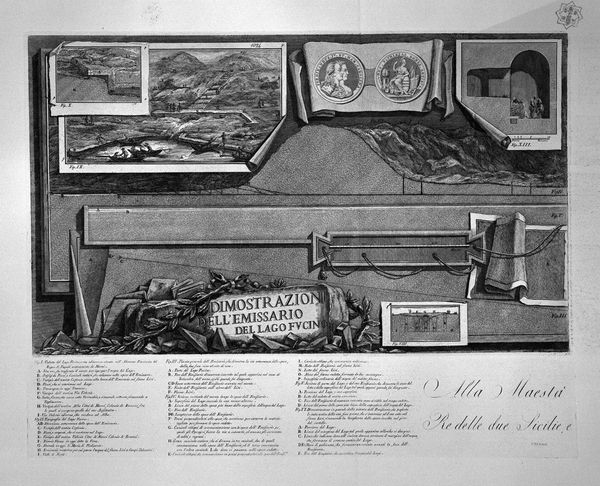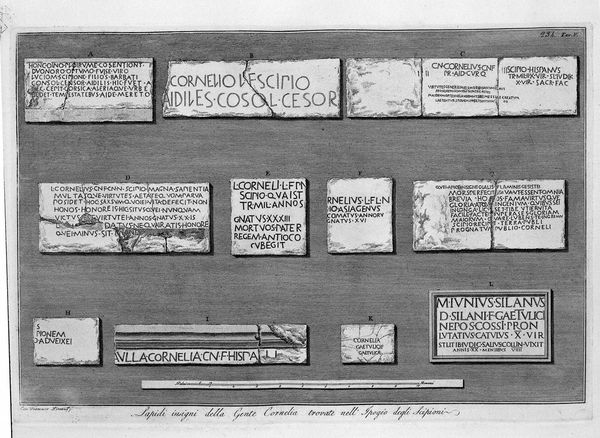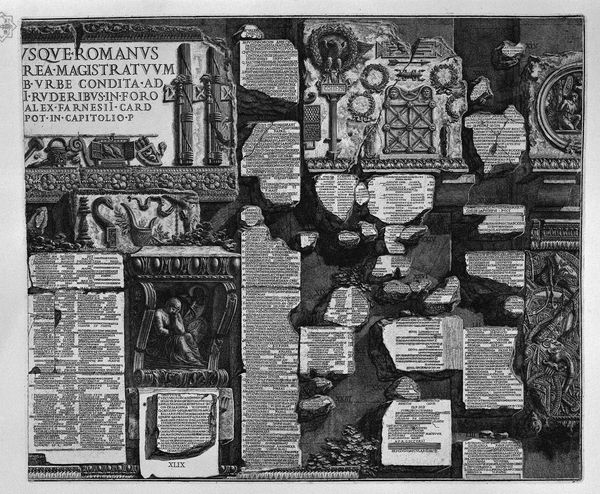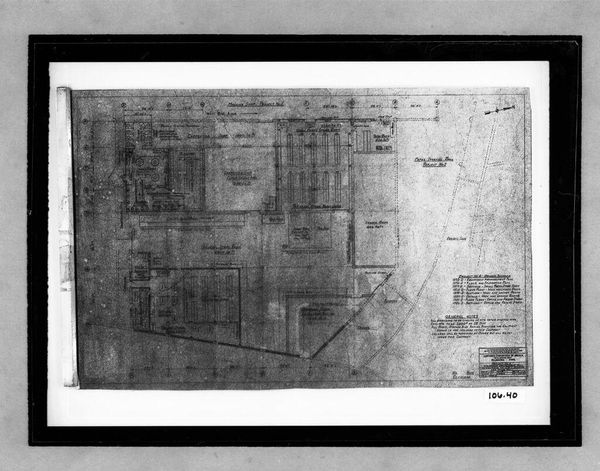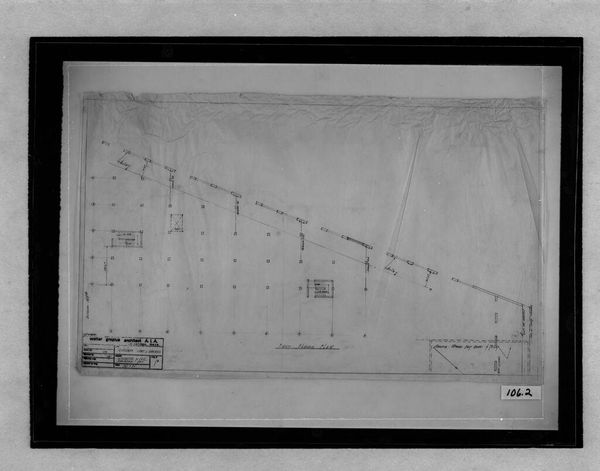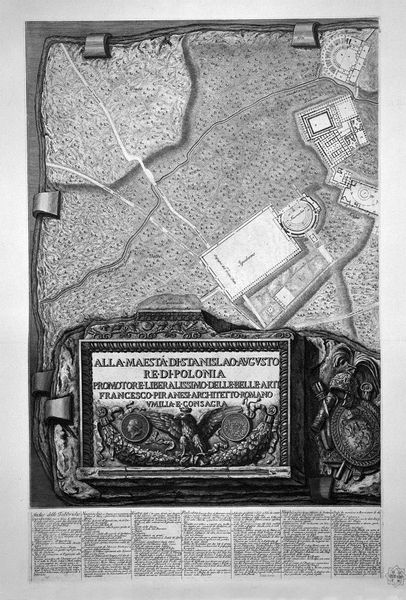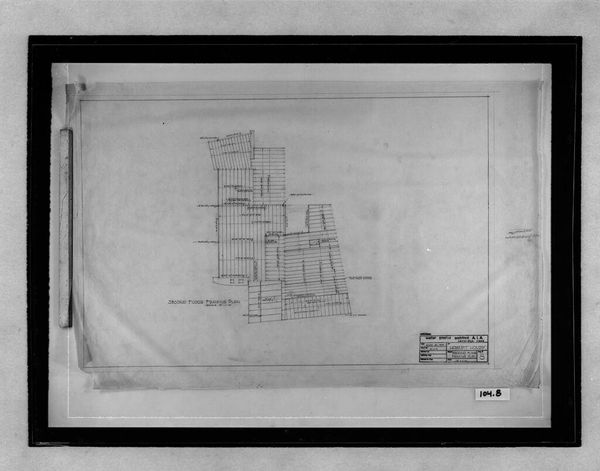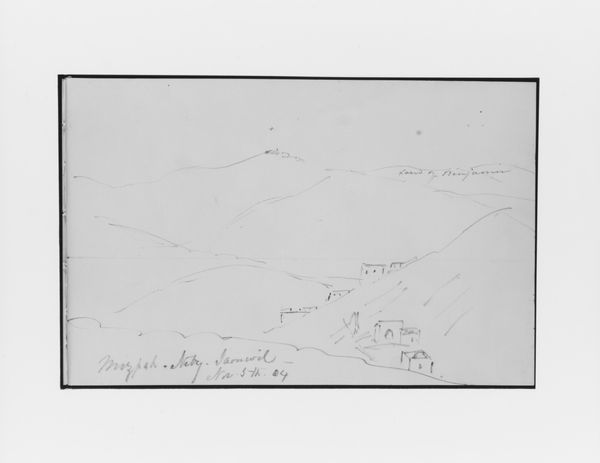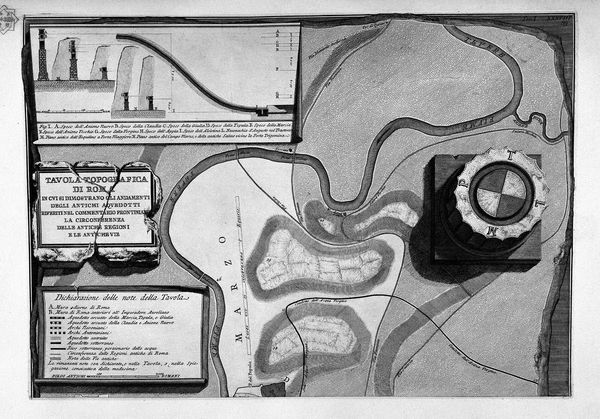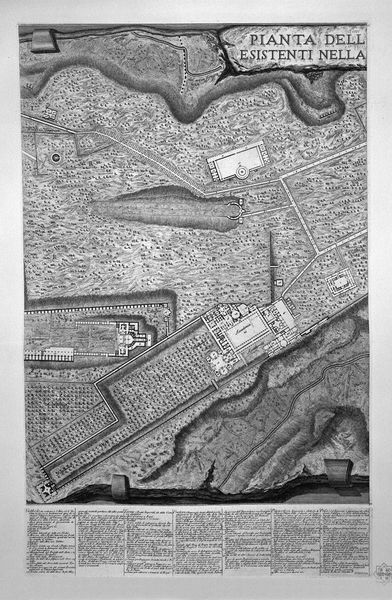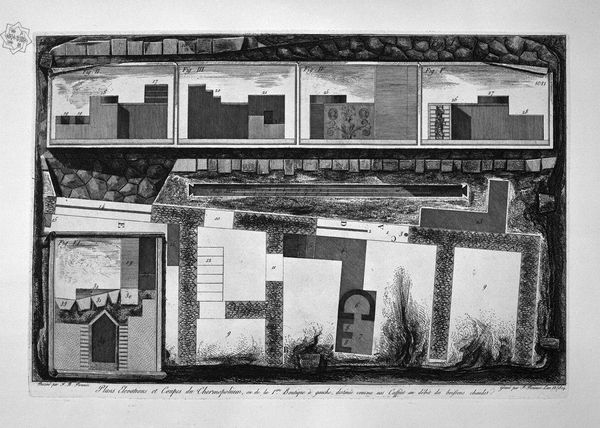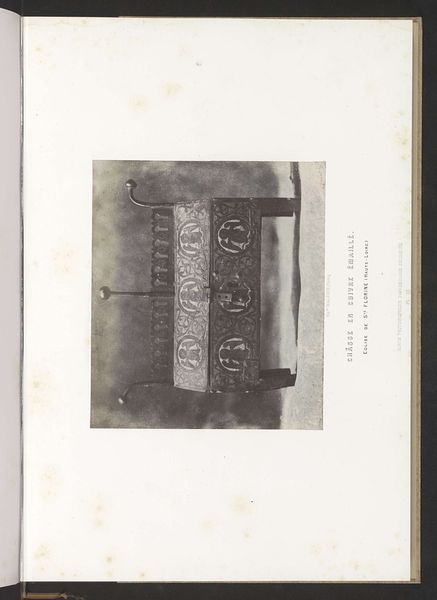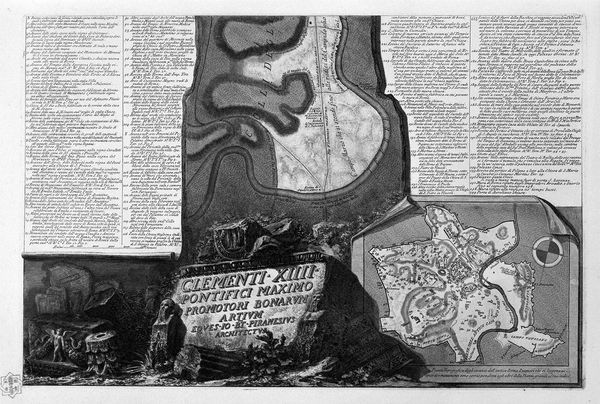
Topography of the factories discovered in the city of Pompeii, with a dedication to St. M King Gustavus Adolphus of Sweden
0:00
0:00
print, etching, engraving, architecture
# print
#
etching
#
landscape
#
form
#
geometric
#
ancient-mediterranean
#
column
#
line
#
cityscape
#
history-painting
#
italian-renaissance
#
engraving
#
architecture
Copyright: Public domain
Curator: Today we're looking at "Topography of the factories discovered in the city of Pompeii, with a dedication to St. M King Gustavus Adolphus of Sweden", a detailed etching and engraving. Editor: It feels like looking at an archeological record brought to life; quite overwhelming, and also a little forbidding, like deciphering the rules of a lost world. All those tiny marks and meticulously organized components. Curator: Piranesi's skill is remarkable, isn’t it? The lines, the details… notice how it elevates something as practical as topography through its complex creation. One can almost see the hand labor involved. Editor: Absolutely. The ruins depicted evoke feelings of loss and remembrance. Observe the weight of the image of those grand buildings and their slow decomposition. Do you also feel the weight of time embedded in them? Curator: It's not merely representational but also conceptual. Each mark is evidence of intellectual as well as physical labour to present both functional knowledge and historical weight, while simultaneously acting as evidence of Italian craftsmanship and trade connections with Sweden through the dedication. Editor: And those fragments suggest stories—a cultural memory embedded in stone, inviting one to contemplate past glories. Those buildings are like symbols, archetypes really. Don't they conjure ideas of justice, the domestic, spirituality, and earthly existence? Curator: Consider the networks implied: the Roman civilization, the 18th-century artisans reproducing their artifacts. The print also prompts consideration of the very purpose of documenting these 'factories,' reflecting their role in larger systems of production and the way this was crucial to ancient society. Editor: The power of the piece comes from the echo, the layering, the multiple visual stories intersecting. It is not just a map; it’s a representation of something that no longer exists except in memory, in our ideas of a previous life. Curator: An object of labor used as a cultural record intended for a particular Swedish figure in power. It embodies function, artistic labor, and serves simultaneously as document and gesture, reminding us how material objects are often implicated in power structures. Editor: Yes, precisely. This intricate picture really shows the connection between making and significance; both point towards human attempts to make sense of and endure across time.
Comments
No comments
Be the first to comment and join the conversation on the ultimate creative platform.
